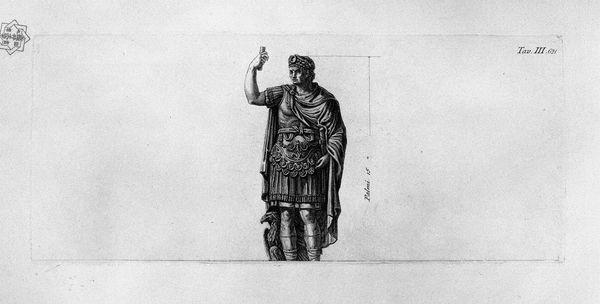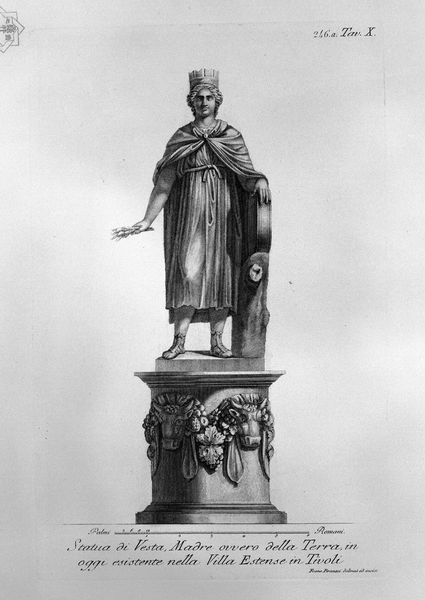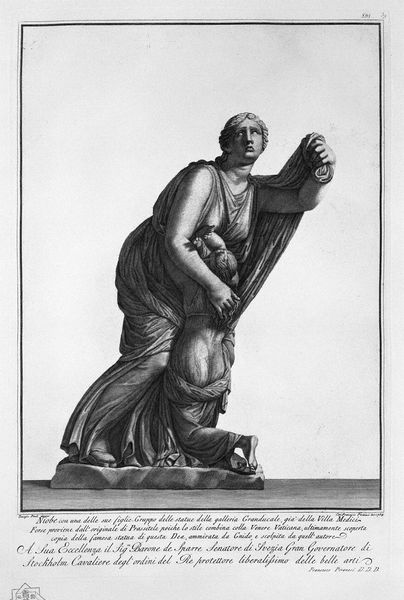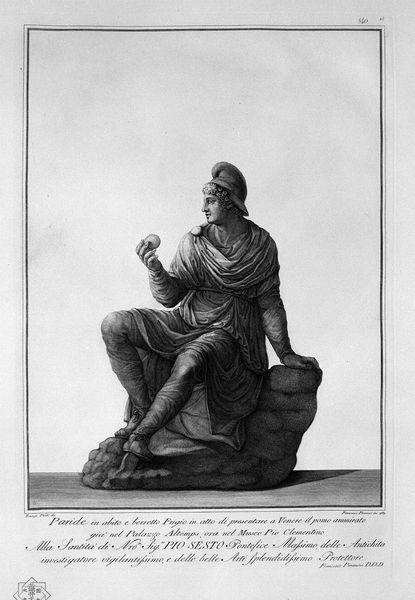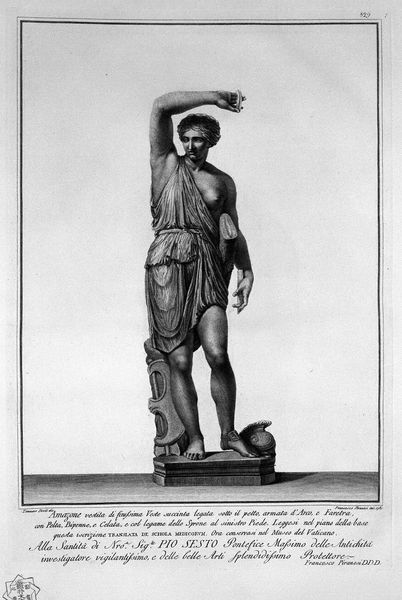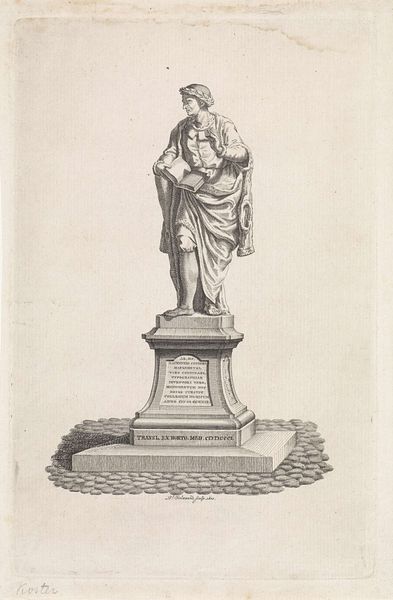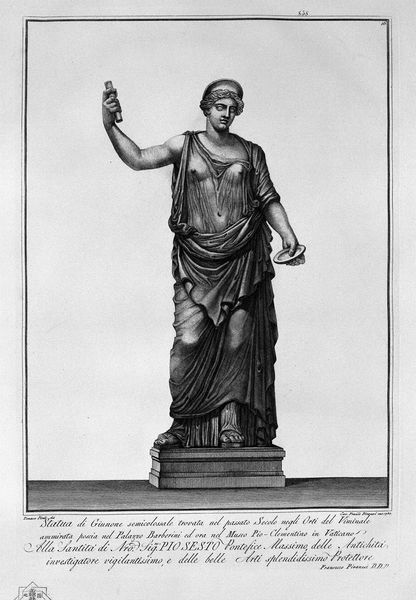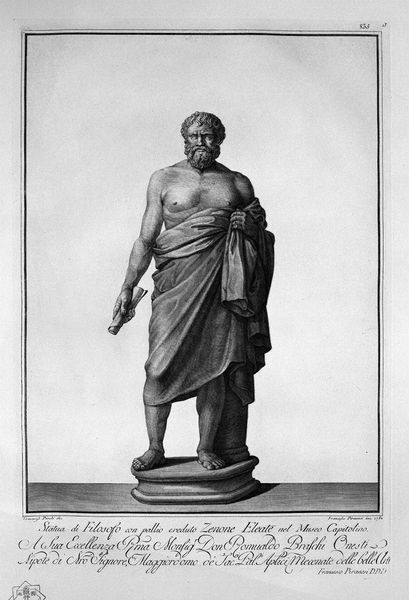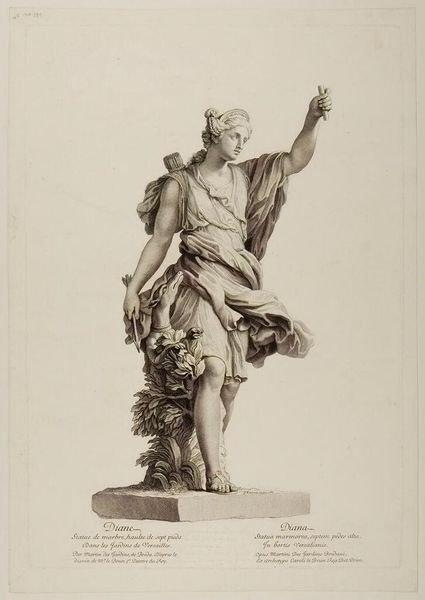
drawing, sculpture, graphite
#
drawing
#
classical-realism
#
pencil drawing
#
column
#
sculpture
#
graphite
#
history-painting
#
academic-art
#
graphite
Copyright: Public domain
This view of the Antonine column, in six tables, was made by Giovanni Battista Piranesi. Piranesi wasn't just an artist but a master printmaker. Etching, the process behind this image, involves coating a metal plate with wax, drawing through it to expose the metal, and then bathing it in acid. The acid bites into the exposed lines, creating grooves that hold ink. Piranesi would then press paper against the inked plate, transferring the image. Notice the incredible detail he achieves: the textures of the robes, the solid form of the column, the very sense of weight and scale, all rendered through thousands of etched lines. The lines themselves speak of labor, a meticulous accumulation of skilled action. Think of Piranesi, bent over his workbench, his hand moving with precision, guided by his vision of ancient Rome. In its own way, printmaking democratizes art through replication and distribution. Piranesi was really questioning traditional hierarchies, placing his craft on par with architecture. He challenges us to reconsider what we value: the grand monument itself, or the artist's labor that brings it to life on paper.
Comments
No comments
Be the first to comment and join the conversation on the ultimate creative platform.
